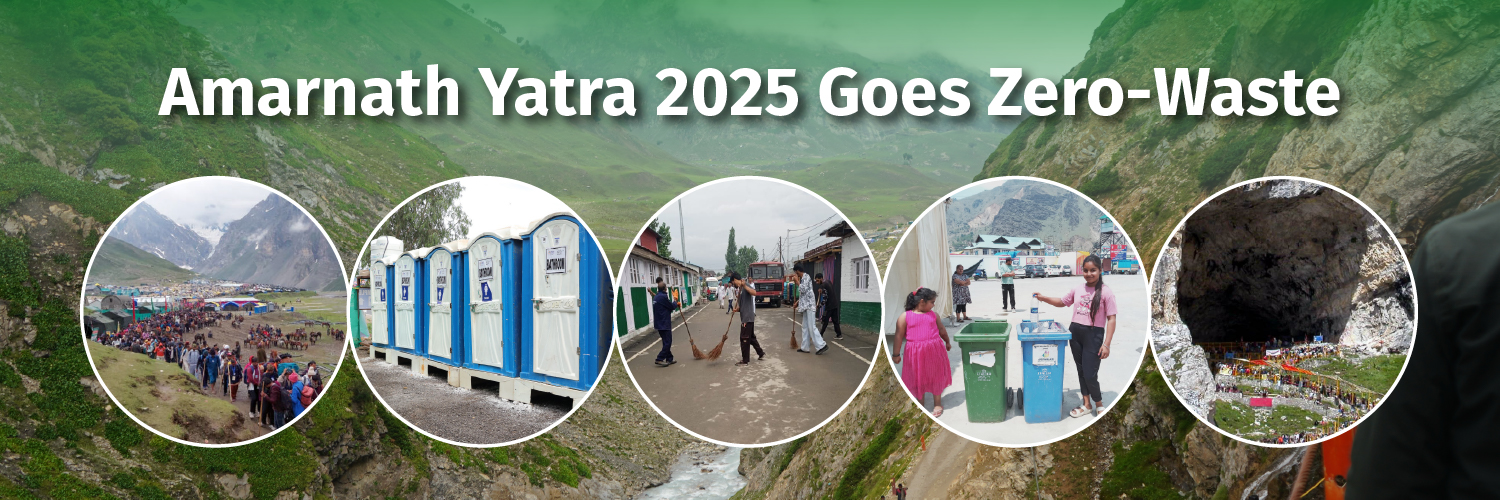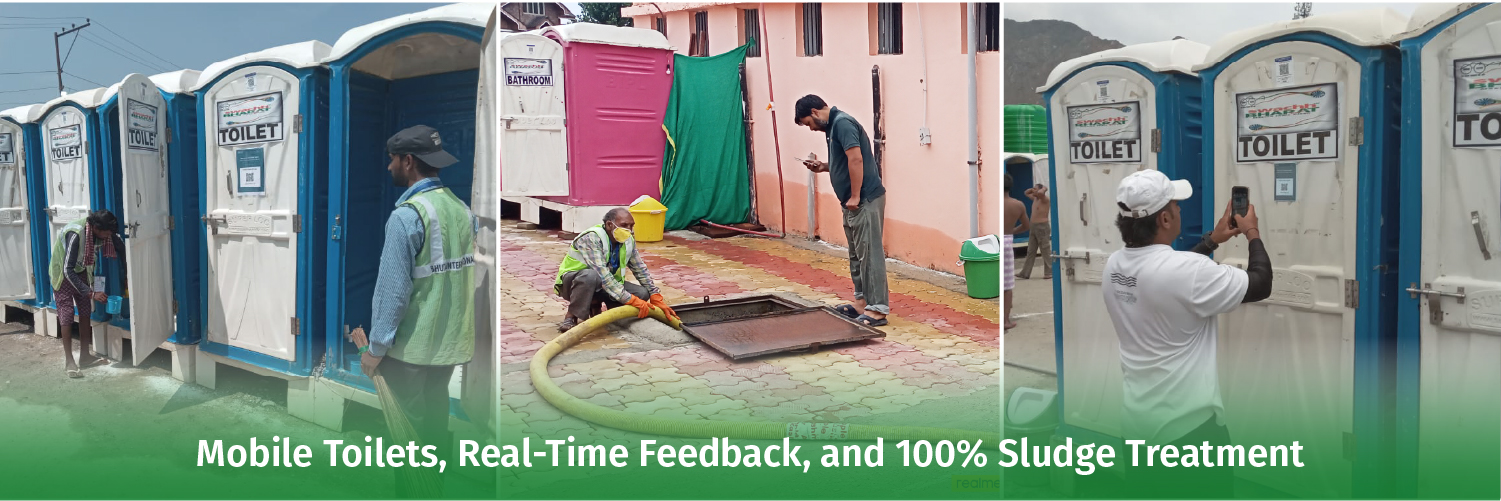
The Amarnath Yatra 2025 was more than just a sacred pilgrimage—it emerged as a powerful movement for Swachhata and sustainability. With over 4 lakh devotees making the arduous trek to the holy cave at 3,880 meters in the Kashmir Himalayas, the Shri Amarnath Ji Shrine Board, in close coordination with the Jammu and Kashmir Government, placed a strong emphasis on scientific waste management and plastic-free practices to ensure a zero-landfill, eco-friendly Yatra. In alignment with the objectives of the Swachh Bharat Mission Urban 2.0, a comprehensive set of initiatives was implemented to ensure a clean, hygienic, and plastic-free environment for pilgrims.
As per J&K Housing and Urban Development Department, the initiative was driven by a well-structured action plan and executed through seamless coordination among Swachhata Executives, TULIP interns, and volunteers deployed across lodgement centres, langar sites, and Yatra camps. These personnel promoted waste segregation, discouraged single-use plastics, and spread awareness about sanitation and hygiene. Real-time feedback on sanitation facilities was gathered through QR-coded toilets, while robust waste management systems and extensive awareness campaigns further encouraged pilgrims to maintain cleanliness and dispose of waste responsibly.

Approximately 11.67 metric tons of waste was being generated daily during the Yatra, including 3.67 MT of dry waste and 7.83 MT of wet waste as per the Shri Amarnath Ji Shrine Board, 100% of it is processed. With composting and recycling, wet waste from Jammu’s langars and lodgement centres was processed in 3 organic waste composters, each with 1-ton capacity. Dry waste found its way to nearby MRFs, ensuring nothing went to landfill unsegregated or untreated. During the Yatra, waste was collected through a well-planned system of designated bins, including 1,016 twin-bin stations—blue for dry waste and green for wet waste—installed along the Yatra route. Additionally, separate bins were placed near female toilets for the collection of sanitary waste. 65 garbage collection vehicles, including twin-compartment trucks, ensured smooth segregated transport to MRFs and compost pits. To ensure 24x7 cleanliness along the Yatra route, nearly 1,300 SafaiMitras were deployed at various strategic locations. This ensured that all necessary sanitation protocols were in place to support the large number of yatris undertaking the sacred pilgrimage.

In a bold push against single-use plastics (SUPs), langars completely eliminated them. Over 15,000 jute and cloth bags were distributed through over 30 kiosks, urging yatris to switch to sustainable alternatives. Interactive events like Plastic Lao, Thela Lejao and Bin It, Win It turned awareness sessions into fun, making waste segregation and cloth bag adoption a collective responsibility. The message against SUP was conveyed through a comprehensive IEC campaign, featuring strategic signage, nukkad nataks, and widespread promotion on social media.

To cater to hygiene needs across the pilgrimage route, over 1600 mobile toilets were installed—each cleaned twice daily by designated sanitation teams. Real-time user feedback via QR codes brought over 20,000 responses, ensuring swift improvements and high service standards. The faecal sludge generated during the Yatra was being collected through 39 de-sludging vehicles and transported to the nearest FSTPs for treatment. 100% of the faecal sludge generated was being treated during the Yatra Resource Recovery in Motion

The Green Pledge campaign witnessed active participation from over 70,000 devotees, each committing to uphold swachhata and sustainable practices. From engaging pledge walls and selfie booths to the distribution of Swachhata Kits, the initiative turned awareness into action. Noteworthy individuals—designated as Responsible Yatris and Happy Faces—were honoured and their stories were shared across all channels to set positive examples for fellow pilgrims.
The 2025 Amarnath Yatra transformed faith into action by aligning with the goals of Swachh Bharat Mission Urban 2.0. With zero-waste systems, public engagement, and strong urban participation, it marked a shift towards eco-conscious pilgrimages—inspiring cities nationwide to contribute to the vision of Swachh Bharat.
For regular updates, please follow the Swachh Bharat Mission’s official website and social media properties:
Website: https://sbmurban.org/
Facebook : Swachh Bharat Mission - Urban | X: @SwachhBharatGov
Instagram: sbm_urban | Youtube: Swachh Bharat Urban | LinkedIn: swachh-bharat-urban